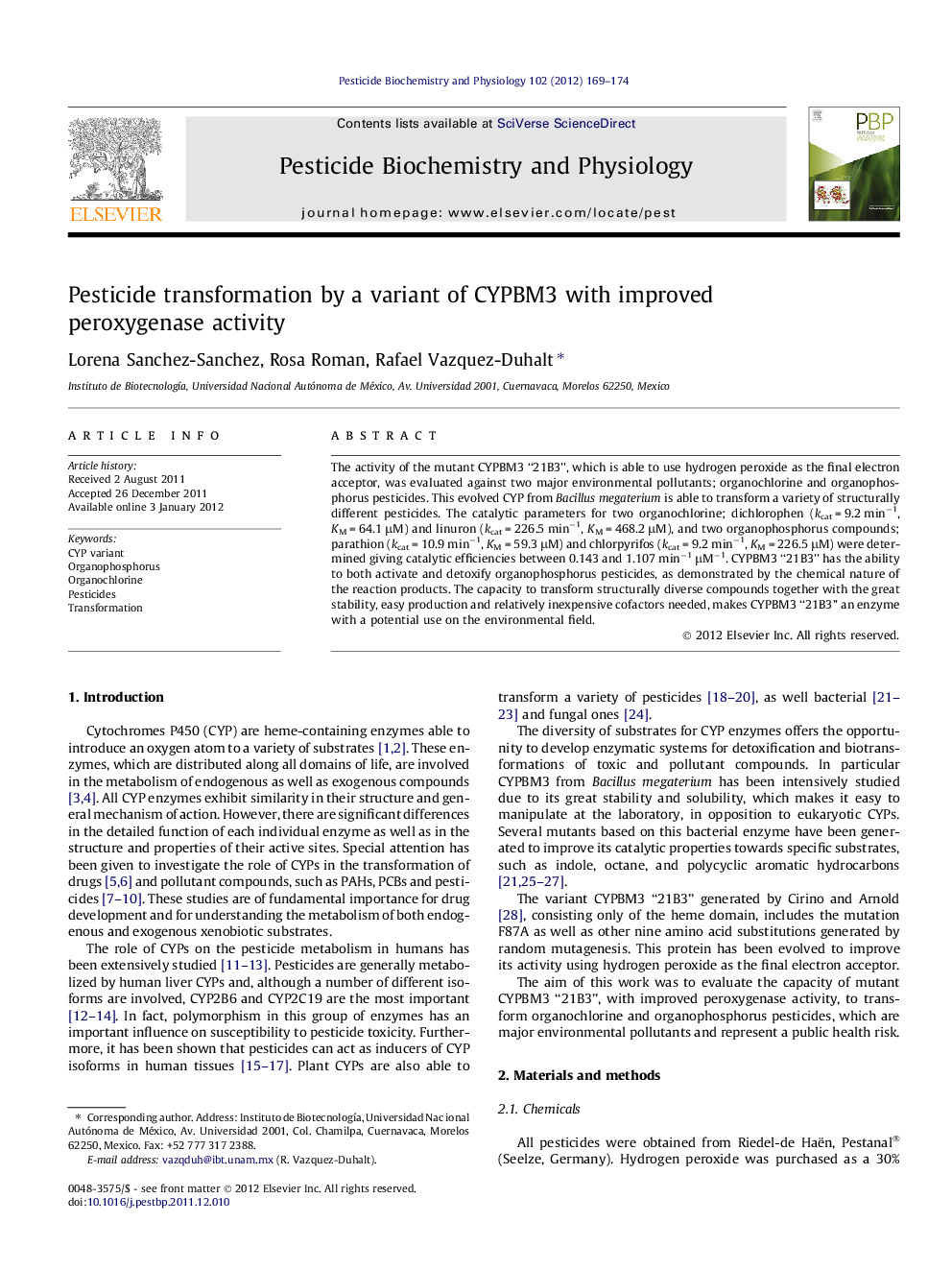| Article ID | Journal | Published Year | Pages | File Type |
|---|---|---|---|---|
| 2009738 | Pesticide Biochemistry and Physiology | 2012 | 6 Pages |
The activity of the mutant CYPBM3 “21B3”, which is able to use hydrogen peroxide as the final electron acceptor, was evaluated against two major environmental pollutants; organochlorine and organophosphorus pesticides. This evolved CYP from Bacillus megaterium is able to transform a variety of structurally different pesticides. The catalytic parameters for two organochlorine; dichlorophen (kcat = 9.2 min−1, KM = 64.1 μM) and linuron (kcat = 226.5 min−1, KM = 468.2 μM), and two organophosphorus compounds; parathion (kcat = 10.9 min−1, KM = 59.3 μM) and chlorpyrifos (kcat = 9.2 min−1, KM = 226.5 μM) were determined giving catalytic efficiencies between 0.143 and 1.107 min−1 μM−1. CYPBM3 “21B3” has the ability to both activate and detoxify organophosphorus pesticides, as demonstrated by the chemical nature of the reaction products. The capacity to transform structurally diverse compounds together with the great stability, easy production and relatively inexpensive cofactors needed, makes CYPBM3 “21B3” an enzyme with a potential use on the environmental field.
Graphical abstractFigure optionsDownload full-size imageDownload as PowerPoint slideHighlights► Peroxidase activity of mutant CYPBM3 “21B3” transforms different pesticides. ► CYPBM3 “21B3” is able to both activate and detoxify organophosphorus pesticides. ► CYPBM3 “21B3” is an enzyme with a potential use on the environmental field.
